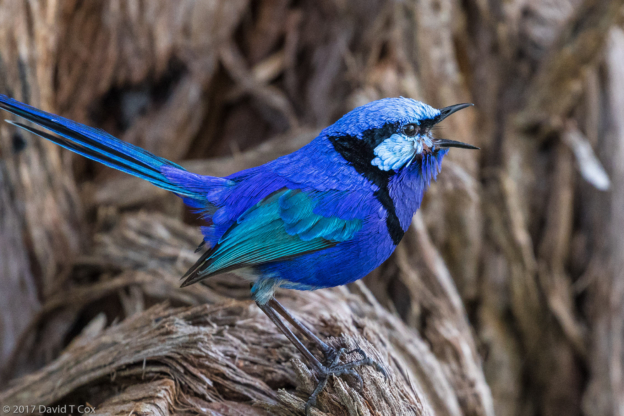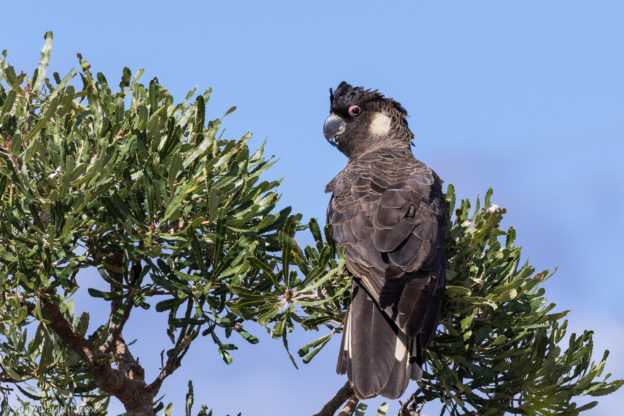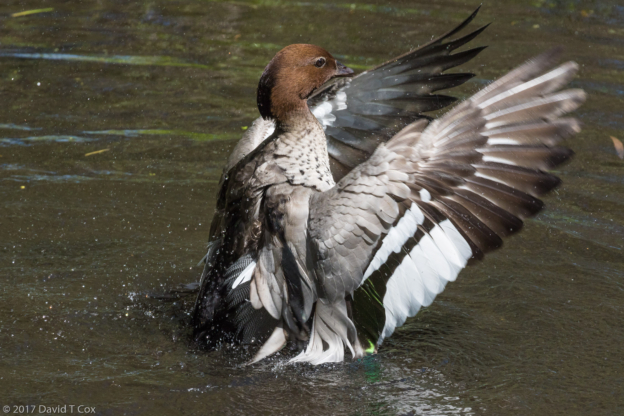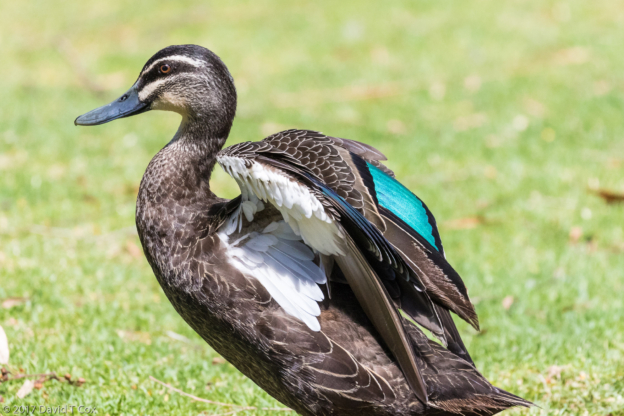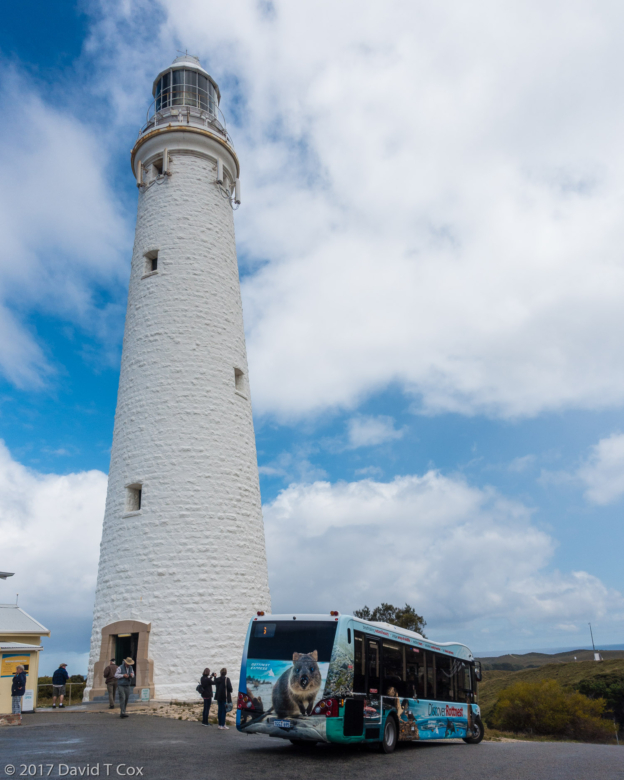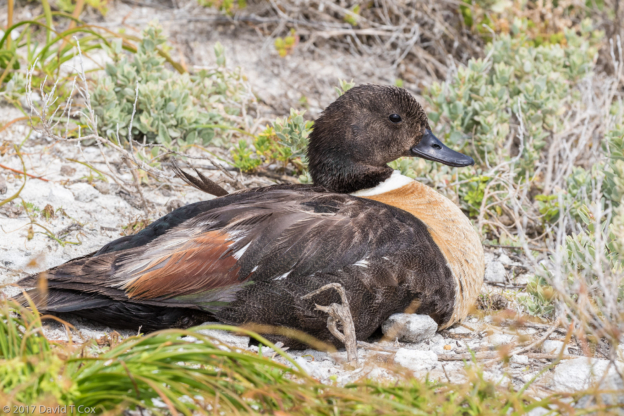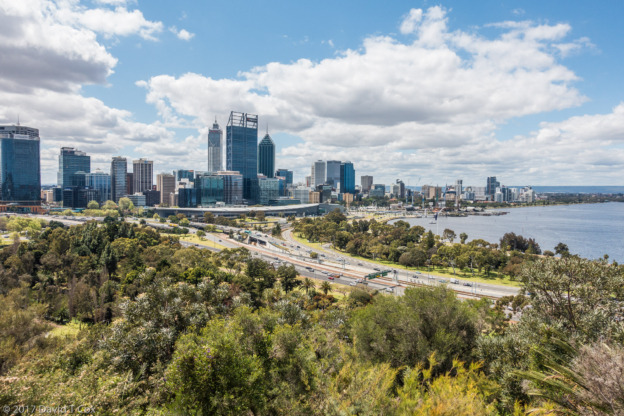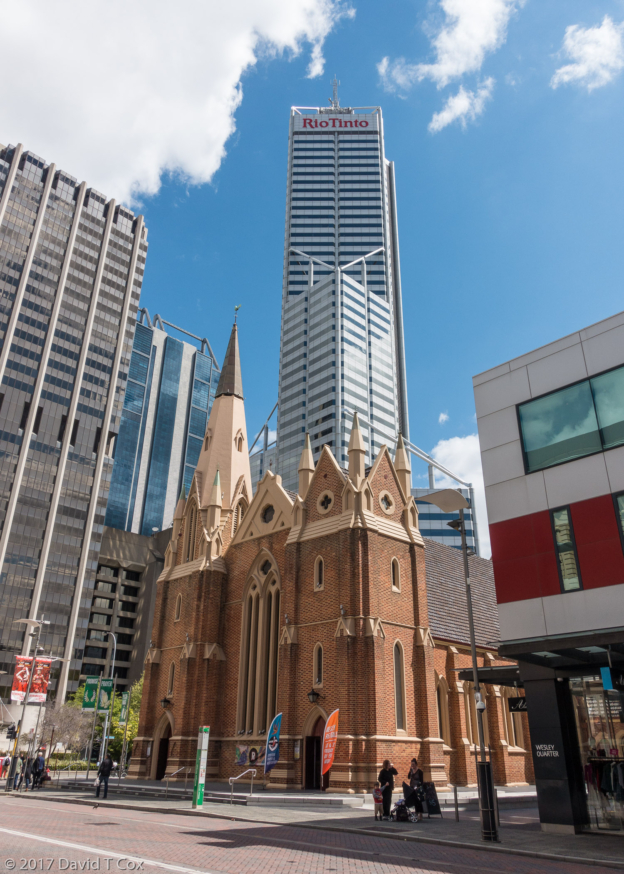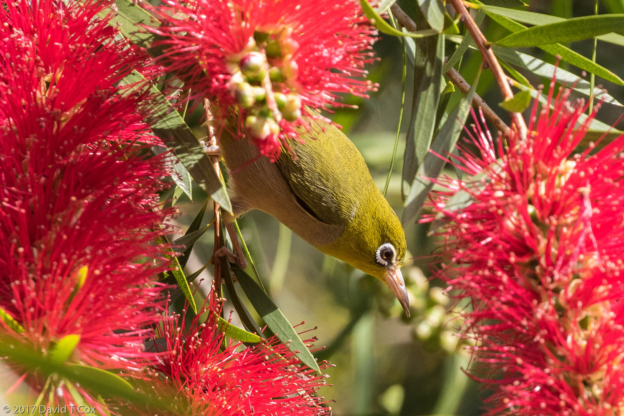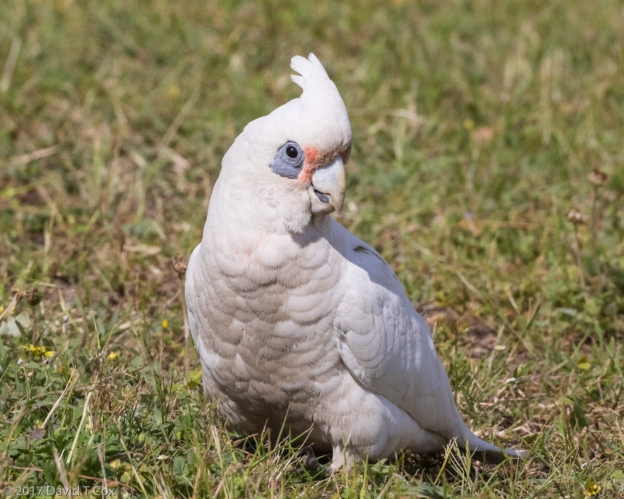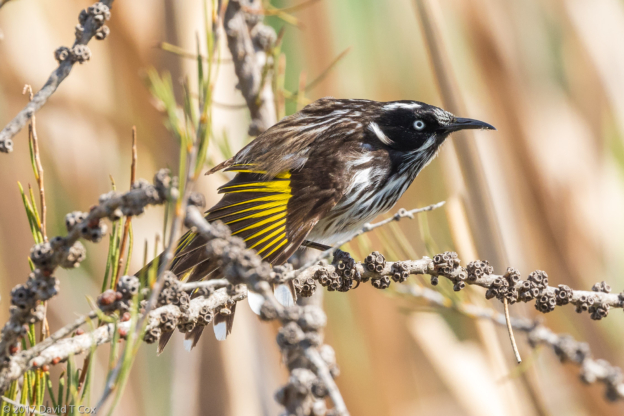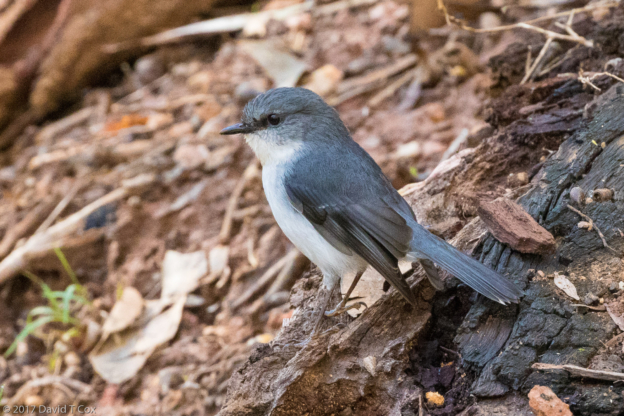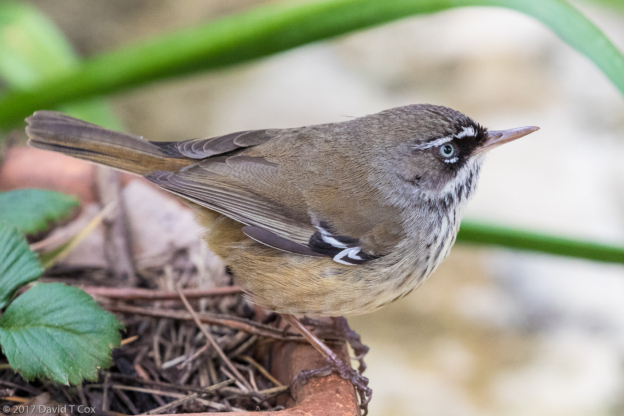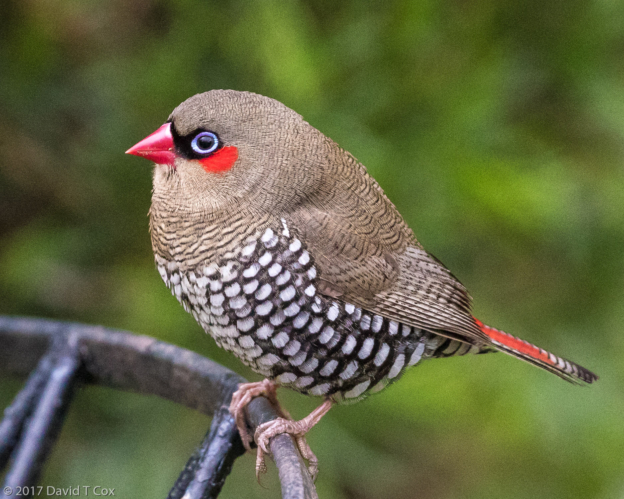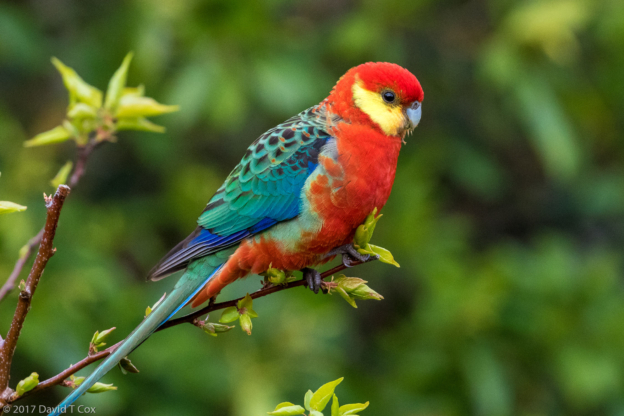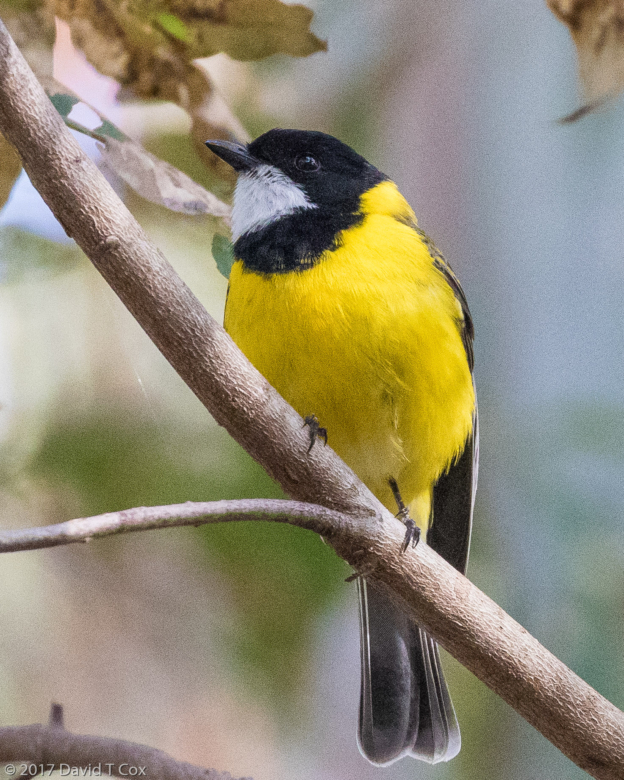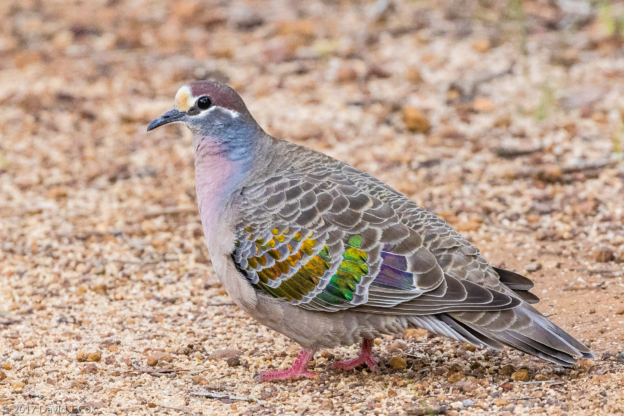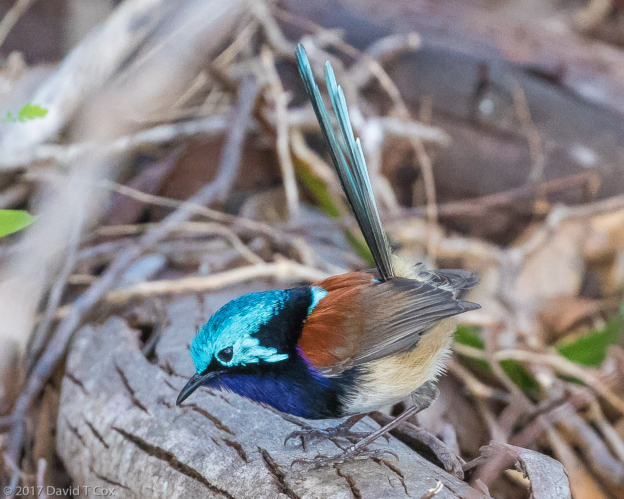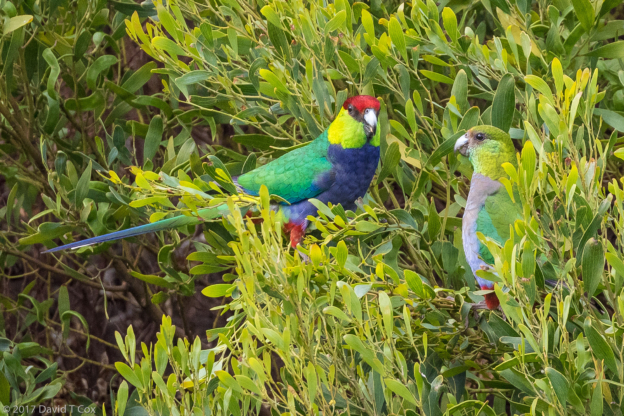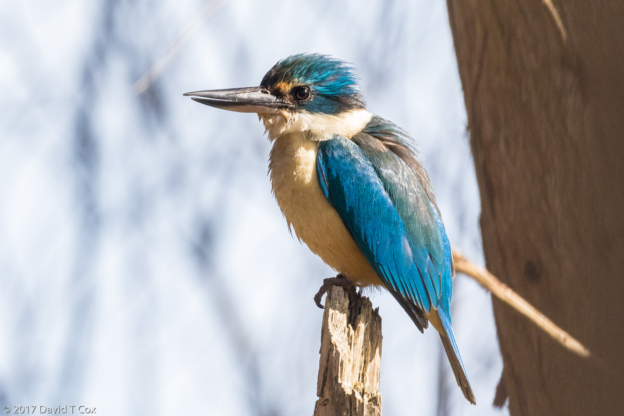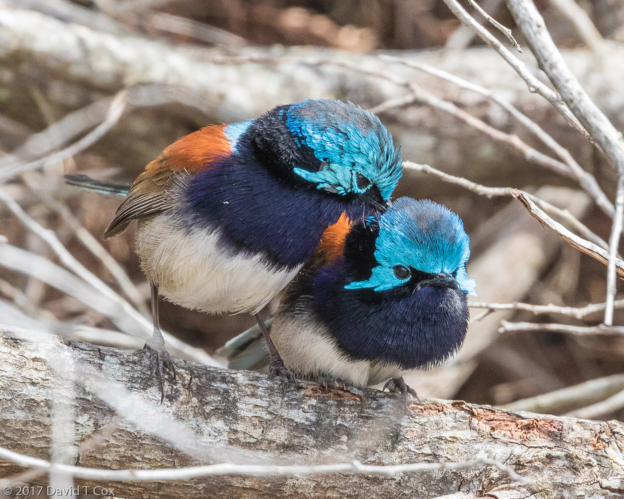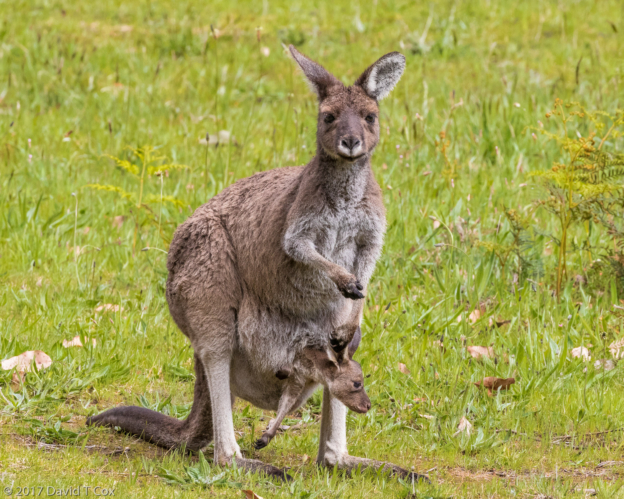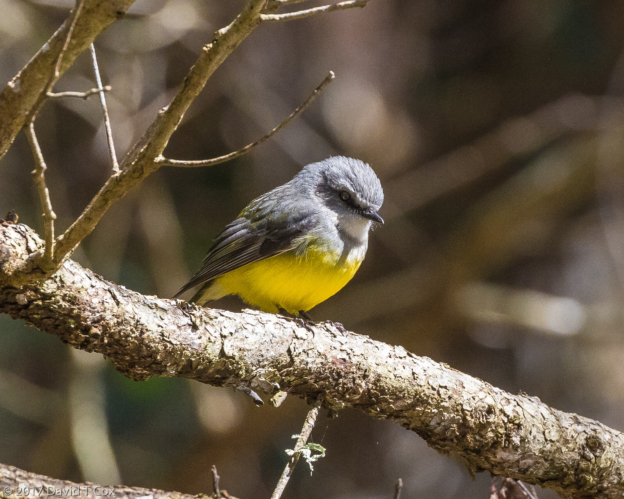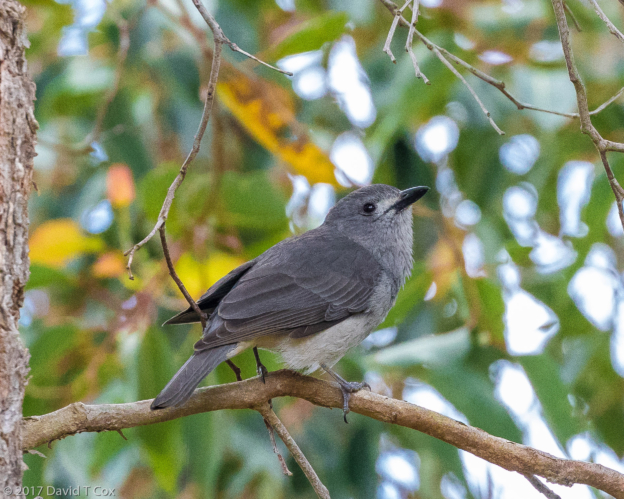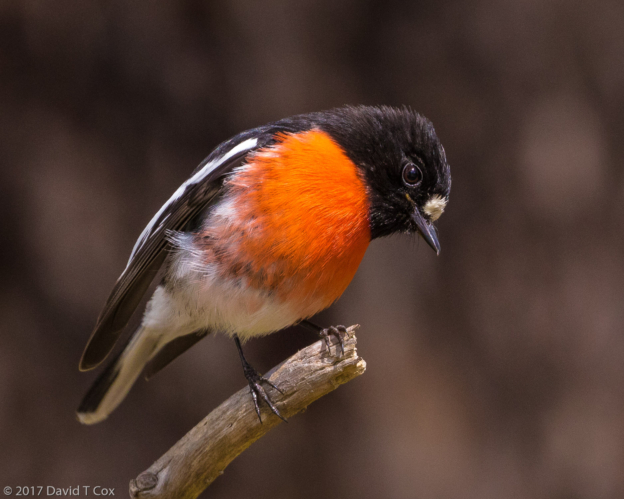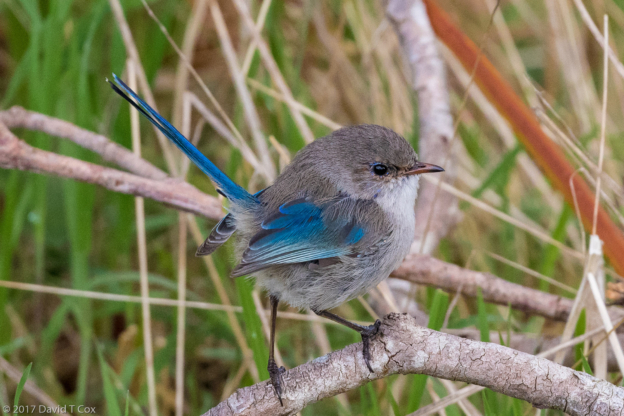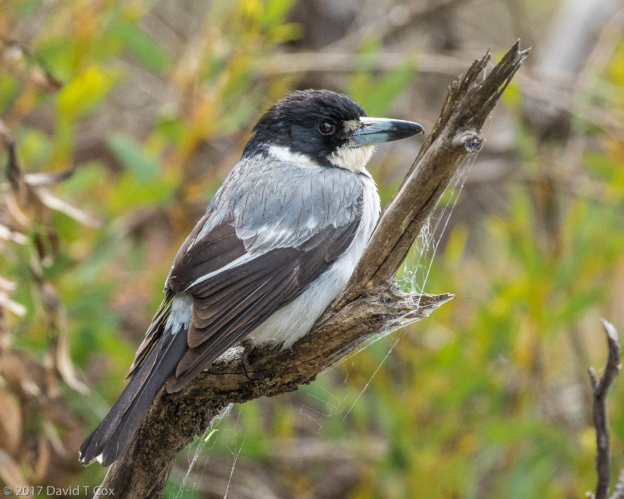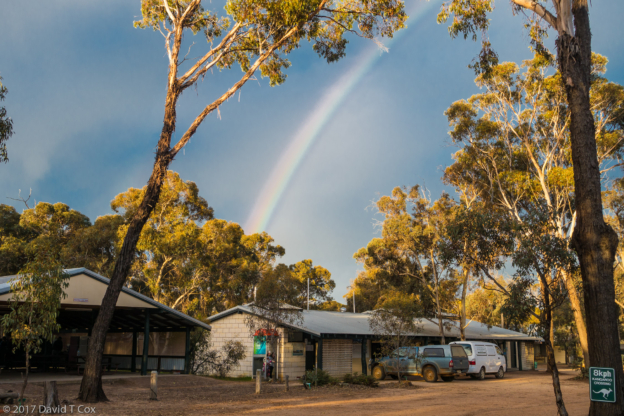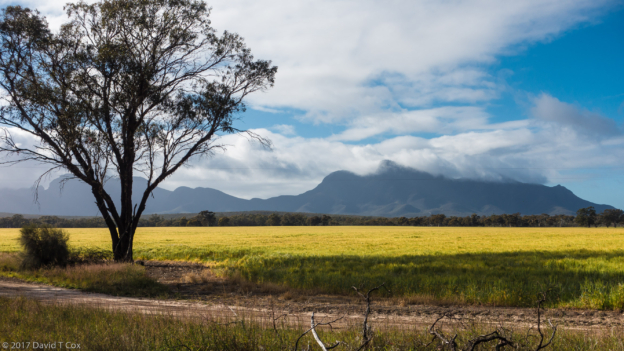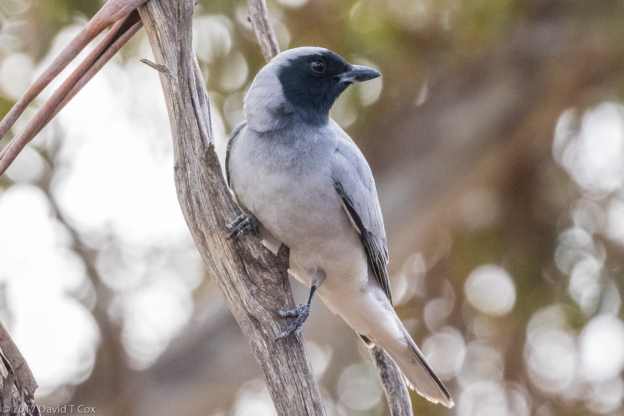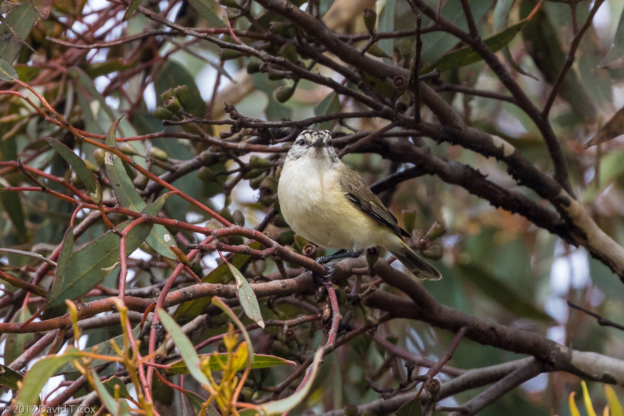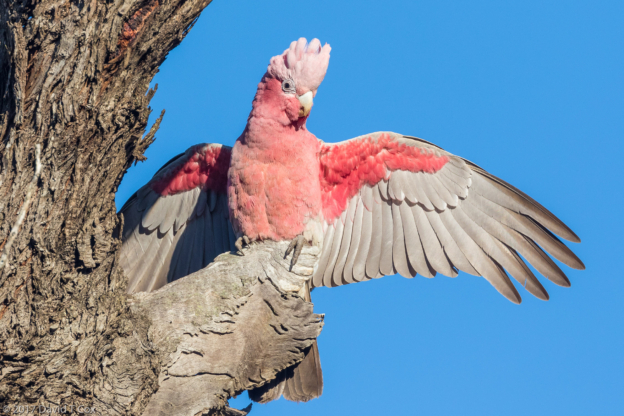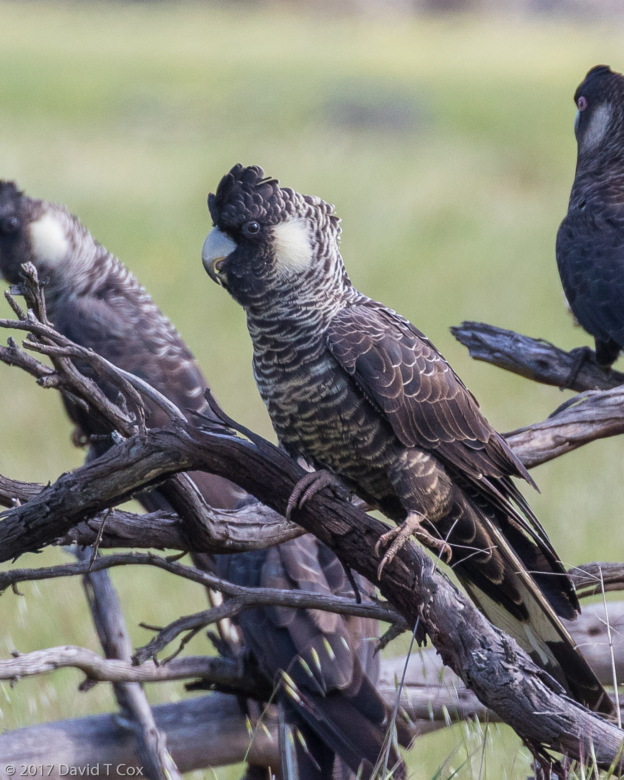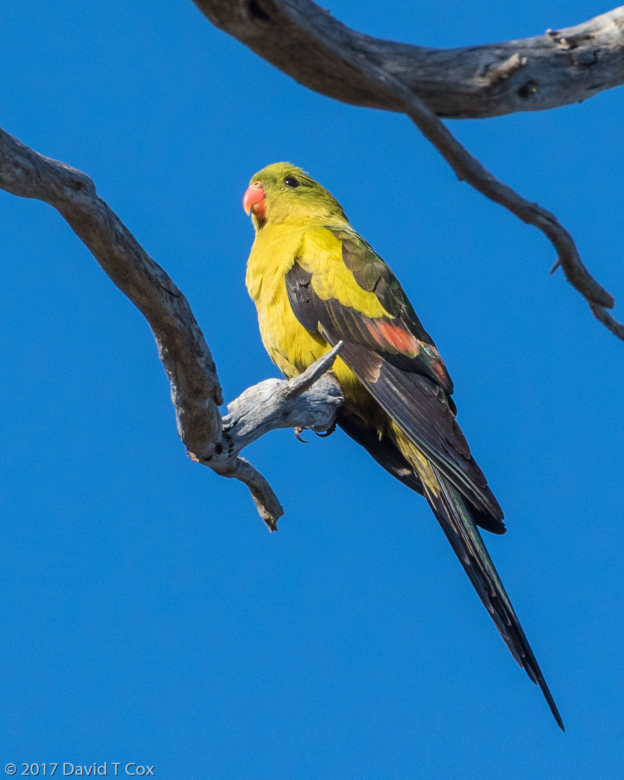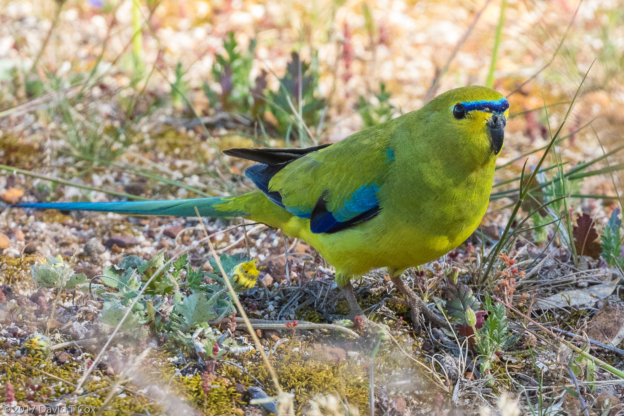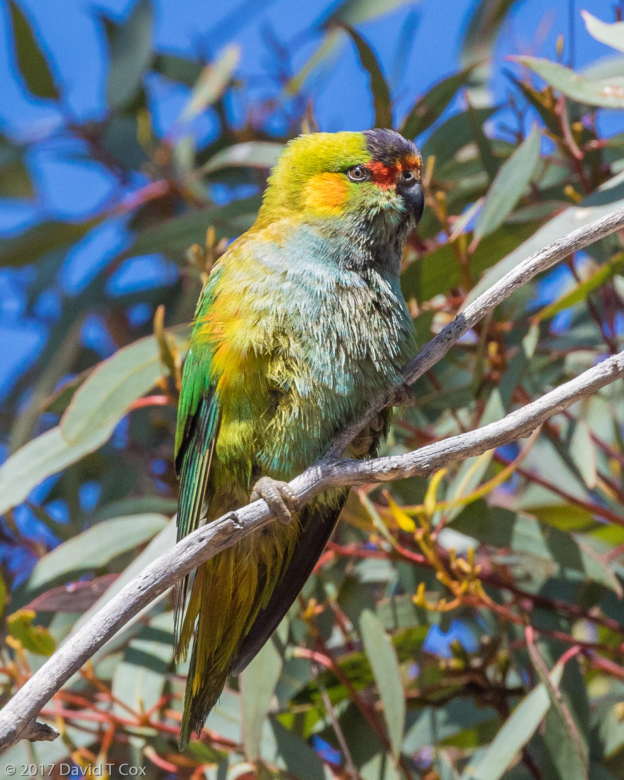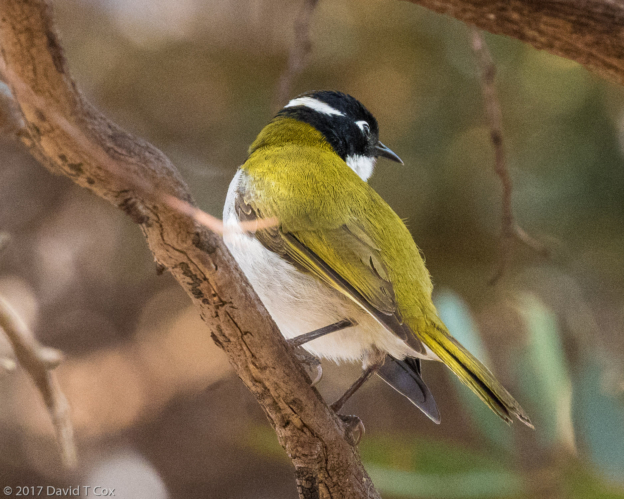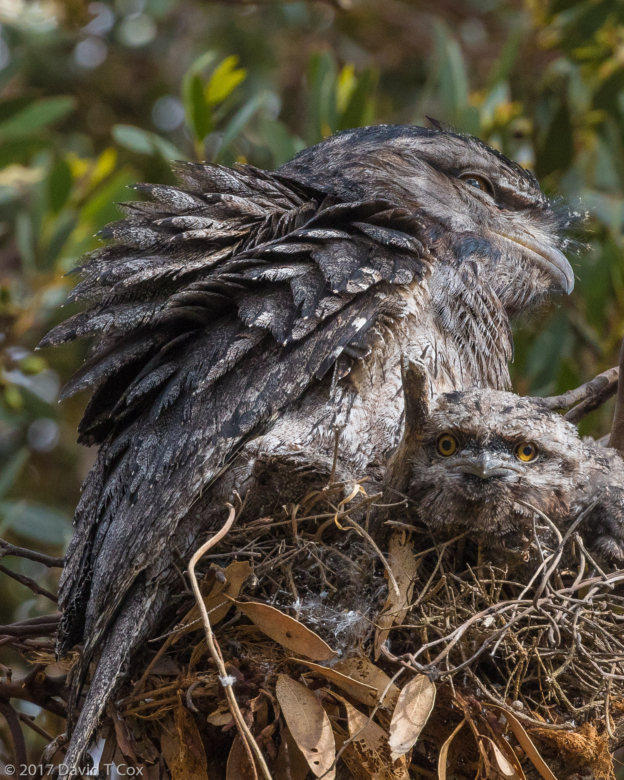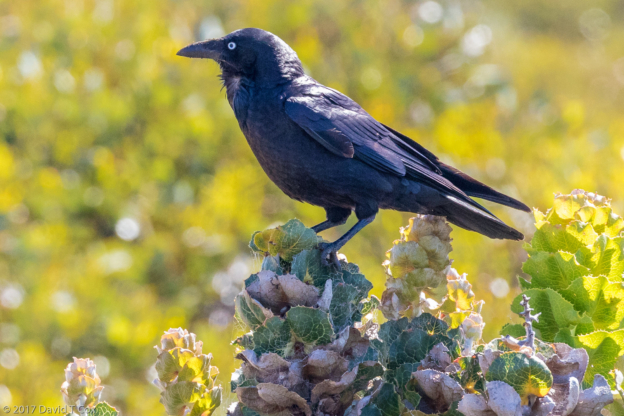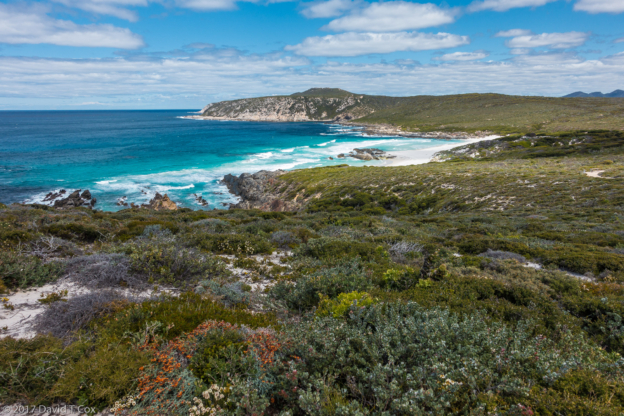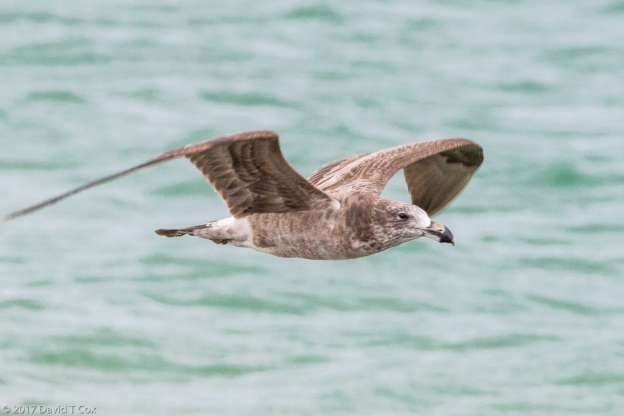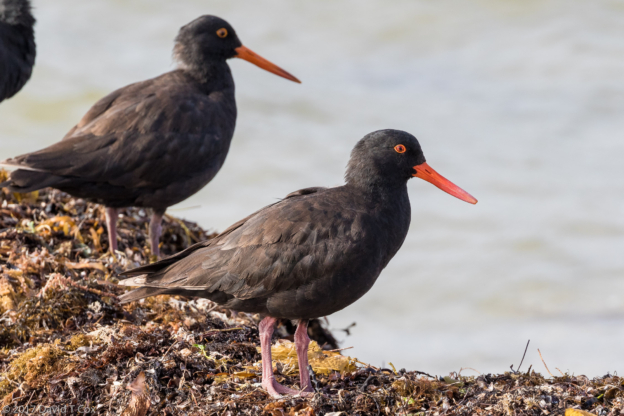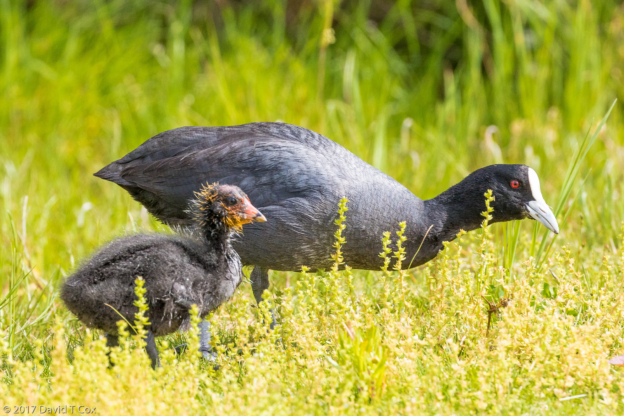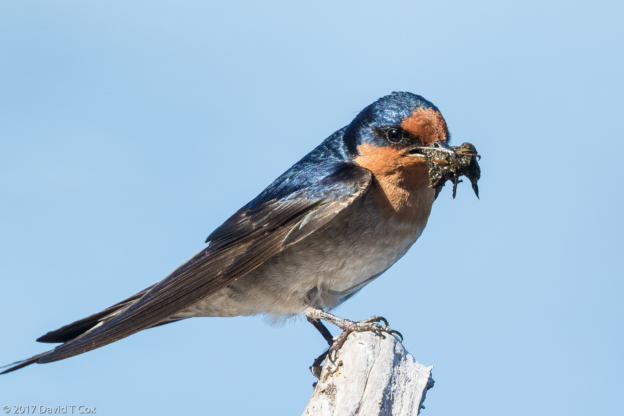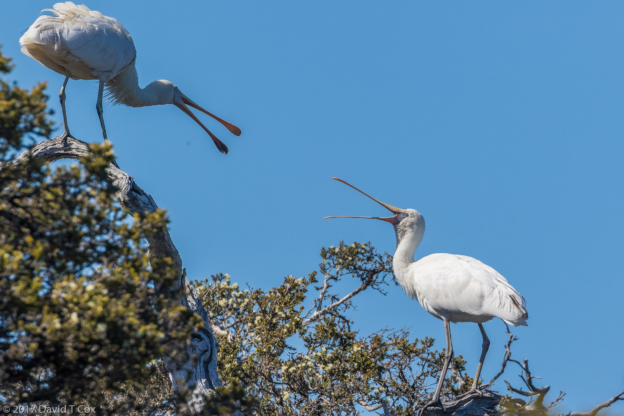All Photos Are Below the Travelogue Text
Click on Any Photo To Open Slide Show
To print the travelogue, right click anywhere on the page. Choose "Print" from your browser dialog box. You can choose Save to PDF in the browser print window.
Share your thoughts.
Email Dave - coxdavid55@hotmail.com
I last reported from Jurien Bay, just north of Perth; since then I have traveled on south to the cape, through the wine regions, tall tree forests, and a number of mountainous national parks.
On the drive south to Perth I stopped for a large flock of Carnaby’s Black Cockatoos, a threatened species. I must have spent over an hour on the side of the Indian Ocean Highway photographing the birds in the trees and the grasslands. These are relatively rare birds, and only recently named a separate species from the Baudin’s Black Cockatoos which I later found in the Stirling Range (see below). Both species are endemic to the southwest of Australia, occupy much the same ranges, and are exceedingly difficult to distinguish positively. In that
same location I also picked up my first Western Corella, a white cockatoo also endemic to the southwest, but much more common. I later passed through Yanchep National Park for photos of ducks, magpies and honeyeaters.
Perth is the only large city in Western Australia (pop 1.7 mil), and by distance and time lies exactly halfway through my journey. It is said to be the large city most isolated by road from any other large city in the world, with driving distance to Adelaide being 2,700 km, or 1,680 miles (Iquitos, Peru is the large city most isolated with no roads whatsoever leading to it). I stayed for several days in the delightful Woodman Park about 10 kilometers south of Freemantle, which is the seaport suburb of Perth. The public transportation in the area is a marvel. For about $10 (US) I bought a day ticket good on any bus, subway or train in the greater Perth area (about 100 km across). From Woodman Park, a bus stopped about every 15 minutes right out front, and drove me straight to the train station in downtown Freemantle – from there high speed trains left every 12 minutes or so to central Perth. In central Perth various bus lines crisscross most streets, arriving every 5 minutes or so, and are completely free to hop on and hop off.
I spent one day visiting downtown Perth, especially the famous and gigantic Kings Park right on the bay, with spectacular views over the bay and downtown Perth – probably not quite as beautiful as the view of downtown Sydney from the botanical gardens, but close. I say bay, but Perth actually sits on the North bank of the Swan River, about 20 km north of the river mouth and bay at Freemantle, so all large ships dock at Freemantle, but ferries ply the route up the river to the downtown area.
I bought a round-trip day-ticket to Rottnest Island which lies off the coast of Freemantle. The ticket included free bus pickup at my park, drop-off at the ferry terminal for a high-speed catamaran which travels a number of times a day to the island and a round-the-island bus tour. The island is famous for its quokkas, extremely friendly and cute small marsupials which inhabit pretty much only this one location. The Dutch captain who first set foot on the island in the late 1600s, and there spent 2 weeks, wrote that “it was an island paradise, but infested with rats the size of large cats” – and so it received its name “Rottnest.” The quokkas do sort of look like rats in the face, but are so friendly that everyone loves them. When they sleep, right out in public on the grass or in front of a restaurant, they curl their head down under their feet, and for all the world look exactly like a brown fuzzy soccer ball with a hairless tail sticking out from underneath. While discussing Rottnest Island everyone was relaying the story of the drunken British tourist who hauled off and kicked one of the quokkas – all were pleased to report that the hooligan still is in jail. The “rats” are beloved and fully protected by law. I had a cappuccino outside a restaurant and watched in amusement as a quokka hopped up to the glass door and sadly sat there apparently hoping someone would let him in for snacks (people do break the rules, of course, and feed the quokkas bits of junk food, which causes the “beggar” quokkas to get patchy fur from the poor diet).
From Freemantle I drove south, pausing one night at Bunbury before continuing on to the town of Margaret River which lies on the river of same name, and is at the center of the entire region of same name; this is wine country, second only barely to the great vineyards which lie just north of Sydney. It is lush, full of small forested national parks, fruit orchards, and hundreds of small vineyards, almost all open daily to visitors for tours, samples or sales.
I walked a number of times along the trails by the little river where there were White-breasted Robins and Red-winged Fairy Wrens among many other birds. I was fortunate through a series of inquiries at the Community Center to meet Christine Wilder who generously spent an entire day guiding me to various locals in the Margaret River region for different birds. This included some of her relative’s and friend’s homes where birds were attracted to the beautiful gardens, which introduced me to the stunning Red-eared Firetails (finches) and breeding pairs of the Western Rosellas (parrots). I also visited the famous Berry Farm out in the countryside where I enjoyed a cappuccino while photographing New Holland Honeyeaters and a gorgeous male Splendid Fairy Wren in full breeding plumage. I found many of the meadows in the southwest contained groupings of Emus and Western Grey Kangaroos.
I traveled then east and south through many small national parks which protected various species of the largest eucalyptus trees – these forests are known generally as the “Tall Tree” forests and the trees indeed are tall, running to 50 meters (160 feet). I stayed at an old logging town, Manjimup, for one night, visiting the surrounding forests and then on to the largest city on the southwestern coast, Albany, where I spent 3 days at a park on Middleton Beach. Darwin visited this bay for two weeks during his famous voyage aboard the Beagle. For whatever reason he did not find the area enjoyable, and wrote “I depart with no sorrow or regret.” I found the area rich with birds, and there photographed a pair of Red-capped Parrots engaged in breeding behavior, and found groups of Red-winged Fairy Wrens in breeding plumage at the nearby Cheynes Beach.
Driving north from Albany I stopped at Porongurup National Park where the Scarlet Robin, Western Yellow Robin, Yellow-rumped Thornbill and Inland Thornbill all flew around the picnic area. Nearby I was surrounded by a small mob of Western Grey Kangaroos in the early morning; several females had joeys in their pouches, curious about everything outside. Later I stopped at Kamballup park where mostly I found large quiet mosquitoes that continued to bite the same spot on the back of one hand until it wept – I have no idea what attracted them to that spot other than the previous mosquito, but I had not put on DEET when I started the walk.
I passed two very busy days at Stirling Range Retreat in the Stirling Range National Park where there was an enormous variety of hard-to-find birds. After seeking for two weeks I finally found a large flock of endangered Baudin’s Black Cockatoos, only recently split from the endangered Carnaby’s Black Cockatoos discussed above. The two species are practically identical in appearance and only very slightly different in their calls, the Baudin’s having two middle syllables. To positively distinguish the two, other than at a nesting site (they use different species of nesting trees), one needs to get a very clear look at the upper bills from the side, difficult in the males as the beaks are black like the feathers, and the males puff out the cheek feathers which covers the tips of the beaks. The females have white beaks and don’t puff their cheek feathers. Seen from the side, with the beaks open, the tip of the upper bill in the Baudin’s is fully half the height of the entire upper bill, while in the Carnaby the tip is only one third the height. With good high resolution photos it is quite easy to have a positive id, but I believe most people simply cannot distinguish the two.
Walking in the forest edges produced also the breeding Regent Parrots, Elegant Parrots, Purple-crowned Lorikeets, Black-faced Cuckoo-Shrikes and Grey Currawongs, among many others. The Stirling Range is the highest mountain range in southwestern Australia, and the only place in West Australia where it snows. The weather for much of the last 3 weeks has been cold and windy, with scattered showers daily, but that does produce nice rainbows.
From the Stirlings I drove east to Hopetoun at the edge of the Fitzgerald River National Park, and encountered a wonderful pair of nesting Tawny Frogmouths within the caravan park. As the Frogmouths are related to nightjars, and are night-feeding birds, they sleep during the day. This allowed relatively close photographs, and especially of the female in nest with two young that constantly were popping their heads out from under to see what was happing down below. The Fitzgerald River National Park has breathtaking views over the ocean, and incredible rare flowering plants found nowhere else on earth; it is considered one of the biosphere hot-spots.
My final birding stop in Western Australia is at Esperance, from where I am sending this report. I have not been lucky in seeing Cape Barren Geese, which usually frequent the golf course, but did have good results at Lake Munjingup where I photographed the lone male Musk Duck crying to attract a mate, and the elegant Yellow-billed Spoonbills.
Esperance is the last town of any size before the long haul north and east to South Australia through the infamous Nullarbor Plain. The distance across the Nullarbor Plain and to Port Douglas in S Australia is almost 2,000 km or about 1,220 miles. Considering the poor 2 lane roads, and my non-aero-efficient hi-top van, it will take me at least 5 long days. I do hope to stop for seashore life. Later. Dave
- Carnaby’s Black-Cockatoo (aka Short-bill), Indian Ocean Hwy 90km N of Perth, WA, Australia
- Carnaby’s Black-Cockatoo (aka Short-bill) male, Indian Ocean Hwy 90km N of Perth, WA, Australia
- Australian Wood Duck, Yanchep NP, 50 km N of Perth on Indian Ocean Hwy, WA, Australia
- Red Wattlebird, Yanchep NP, 50 km N of Perth on Indian Ocean Hwy, WA, Australia
- Pacific Black Duck, Yanchep NP, 50 km N of Perth on Indian Ocean Hwy, WA, Australia
- lighthouse, Rottnest Island, WA, Australia
- Australian Shelduck male, Rottnest Island, WA, Australia
- Quokka, Rottnest Island, WA, Australia
- Quokka with infant, Rottnest Island, WA, Australia
- Perth downtown from Kings Park, WA, Australia
- Perth downtown, WA, Australia
- Silvereye,r Big Swamp, Bunbury, WA, Australiia
- Western Correla, Big Swamp, Bunbury, WA, Australiia
- New Holland Honeyeater Big Swamp, Bunbury, WA, Australiia
- Tuart Forest NP, north of Bunbury, WA, Australia
- Splendid Fairy-Wren, The Berry Farm, Margaret River Region, WA, Australia
- White-breasted Robin, South Bank River Trail, Margaret River, WA, Australia
- White-browed Scrubwren ss maculatis, The Berry Farm, Margaret River Region, WA, Australia
- Red-eared Firetail, home yard, Margaret River Region, WA, Australia
- Western Rosella, ss icterotis, Margaret River Region, WA, Australia
- Western Whistler, Margaret River w guide Christine Wilder, WA, Australia
- Common Bronzewing, Margaret River w guide Christine Wilder, WA, Australia
- Red-winged Fairy-Wren, Margaret River by bridge w guide Christine Wilder, WA, Australia
- Red-capped Parrot, MIddleton Beach Pk, Albany, WA, Australia
- Sacred KIngfisher, Lake Seppings, Albany, WA, Australia
- Red-winged Fairy Wren, Cheynes Beach, WA, Australia
- Western Grey Kangaroo w Joey in pouch, Porongurup NP, WA, Australia
- Western Yellow Robin, Porongurup NP, WA, Australia
- Grey Shrike-Thrush ss rufiventris, Porongurup NP, WA, Australia
- Scarlet Robin, Porongurup NP, WA, Australia
- Splendid Fairy-Wren nonbreeding male, Porongurup NP, WA, Australia
- Grey Butcherbird, Kamballup S of Stirling Range, WA, Australia
- rainbow at Stirling Range NP, WA, Australia
- Grey Currawong, Stirling Range NP, WA, Australia
- Stirling Range NP, WA, Australia
- Black-faced Cuckoo-Shrike, Stirling Range NP, WA, Australia
- Yellow-rumped Thornbill, Stirling Range NP, WA, Australia
- Galah protesting at nest, Stirling Range NP, WA, Australia
- Baudin’s Black Cockatoo (aka Long-bill) female, Stirling Range NP, WA, Australia
- Regent Parrot, Stirling Range NP, WA, Australia
- Elegant Parrot, Stirling Range NP, WA, Australia
- Purple-crowned Lorikeet, Stirling Range NP, WA, Australia
- Gilbert’s Honeyeater Hopetaun Pk, Hopetoun, WA, Australia
- Tawny Frogmouth male, Hopetaun Pk, Hopetoun, WA, Australia
- Tawny Frogmouth female at nest w 2 young, Hopetaun Pk, Hopetoun, WA, Australia
- Tawny Frogmouth female at nest w 2 young, Hopetaun Pk, Hopetoun, WA, Australia
- Australian Raven, Fitzgerald River NP, WA, Australia
- Fitzgerald River NP, WA, Australia
- Pacific Gull juv., Fitzgerald River NP, WA, Australia
- Sooty Oystercatcher, beach from Hopetaun Pk, Hopetoun, WA, Australia
- Eurasian Coot w chick, lake near golf course, Esperance, WA, Australia
- Musk Duck, Lake Monjingup, near Esperance, WA, Australia
- Welcome Swallow with nesting material, Lake Monjingup, near Esperance, WA, Australia
- Yellow-billed Spoonbill, Lake Monjingup, near Esperance, WA, Australia
To print the travelogue, right click anywhere on the page. Choose "Print" from your browser dialog box. You can choose Save to PDF in the browser print window.
Share your thoughts.
Email Dave - coxdavid55@hotmail.com
